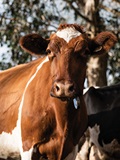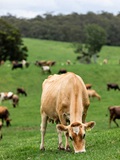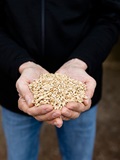Hay Report
Dairy Australia generates a hay report to help farmers make more informed decisions when buying hay. The hay report is updated 40 times per year and provides an independent and timely assessment of hay markets in each dairy region.
Hay prices by location
-
Queensland
-
New South Wales
-
Victoria
-
South Australia
-
Western Australia
-
Tasmania
Select a location to view the hay price:
-
Cereal
N/ALucerne
N/AStraw
N/APasture
$350 - $450Steady -
Cereal
$270 - $340SteadyLucerne
$410 - $460SteadyStraw
$100 - $130SteadyPasture
$300 - $345Steady -
Cereal
$315 - $345SteadyLucerne
$420 - $475SteadyStraw
$90 - $150SteadyPasture
$300 - $350Steady -
Cereal
$280 - $320SteadyLucerne
$395 - $430SteadyStraw
$95 - $150SteadyPasture
$270 - $315Steady -
Cereal
$290 - $330SteadyLucerne
$440 - $460SteadyStraw
$100 - $155SteadyPasture
$310 - $340Steady -
Cereal
$280 - $320$5Lucerne
$390 - $440SteadyStraw
$100 - $135SteadyPasture
$240 - $290Steady -
Cereal
$290 - $330SteadyLucerne
$390 - $450SteadyStraw
$100 - $135$3Pasture
$290 - $340Steady -
Cereal
$280 - $330SteadyLucerne
$370 - $425SteadyStraw
$90 - $140SteadyPasture
$240 - $290$5 -
Cereal
$290 - $325SteadyLucerne
$340 - $380SteadyStraw
$95 - $130SteadyPasture
$290 - $325$3 -
Cereal
$290 - $340SteadyLucerne
$400 - $435SteadyStraw
$95 - $140SteadyPasture
N/A -
Cereal
$265 - $310SteadyLucerne
$360 - $430SteadyStraw
$95 - $135SteadyPasture
$210 - $240Steady -
Cereal
$255 - $280SteadyLucerne
$320 - $370SteadyStraw
$100 - $140SteadyPasture
$225 - $255Steady
National Summary
National background comments: report for the week ending 1 September 2023.
The next update will be on Friday 8 September 2023. Direct links to reports on each dairy region immediately follow this national summary for hay.
Driving Prices Up
- Ongoing dry conditions in parts of Queensland and northern NSW are keeping demand and prices elevated. Local producers are not able to meet local demand, so most of the demand is being met out of the Riverina, northern Victoria, and South Australia.
- Transport costs continue to play a significant role in the cost of fodder supplies, especially given the distances between available fodder supply and the current areas of high demand. There are also some export opportunities removing some supply from the market.
- Suppressed saleyard prices for cattle are continuing to keep more livestock numbers on-farm, and in some cases, producers are looking to restock at the lower price, which is placing additional demand on fodder supplies.
Driving Prices Down
- Green feed continues to be readily available in parts of the country that have seen favourable growing conditions, reducing local demand for fodder supplies in those areas.
- While cattle prices are seeing some producers increase their herds and therefore the demand for fodder supplies, the sheep industry is reportedly reducing herd sizes, even at a low return. This is applying downward pressure on feed prices.
- Hay season is a few weeks away in parts of the country and some end users are holding off on purchases in the expectation that higher supply will reduce the cost of fodder.
- Older hay supplies continue to be made available to the market, as producers clear some space in preparation for the next season. This hay is of variable quality and is reducing the price point in selected regions.
Local News
- Hay trade is moving along, especially out of areas such as Victoria and South Australia (where green feed is still available), and into drier parts of the county such as the Darling Downs and most of NSW. Any fodder being cut in those drier areas is being sold and transported very quickly to meet local demand. In Western Australia, the south is shipping a reasonable supply up into the drier northern parts of the state.
- South Australian growers are reportedly quite pleased with the recent decision around the cease harvest threshold being set by the Country Fire Service for this season, as there were concerns the proposed threshold would have seriously affected the ability to bring in the harvest for both grain and hay.
- Growers and graziers in WA are seeing the value of the sheep herd continue to fall due to the ramifications of the live export trade and the flow-on effects from the possible ban on the trade, with reports of many graziers planning to reduce their flock size.
- The Bureau of Meteorology (BOM) El Niño Alert continues. When El Niño Alert criteria have been met in the past, an El Niño event has developed around 70% of the time. Climate model forecasts also suggest a positive Indian Ocean Dipole (IOD) is likely to develop in late winter or early spring.
Buyers are encouraged to feed test and view fodder before purchasing to ensure of the quality of the feed.
(Price change in table below reflects moves since previous report 25 August 2023)
All Location Hay Prices
| 01 September 2023 |
Cereal |
Lucerne |
Straw |
Pasture |
|
|---|---|---|---|---|---|
Atherton Tablelands | Price range
Change | N/A | N/A | N/A | $350 - $450 Steady |
Darling Downs | Price range
Change | $270 - $340 Steady | $410 - $460 Steady | $100 - $130 Steady | $300 - $345 Steady |
North Coast NSW | Price range
Change | $315 - $345 Steady | $420 - $475 Steady | $90 - $150 Steady | $300 - $350 Steady |
Central West NSW | Price range
Change | $280 - $320 Steady | $395 - $430 Steady | $95 - $150 Steady | $270 - $315 Steady |
Bega Valley | Price range
Change | $290 - $330 Steady | $440 - $460 Steady | $100 - $155 Steady | $310 - $340 Steady |
Gippsland | Price range
Change | $280 - $320 $5 | $390 - $440 Steady | $100 - $135 Steady | $240 - $290 Steady |
Goulburn & Murray Valley | Price range
Change | $290 - $330 Steady | $390 - $450 Steady | $100 - $135 $3 | $290 - $340 Steady |
South West Victoria | Price range
Change | $280 - $330 Steady | $370 - $425 Steady | $90 - $140 Steady | $240 - $290 $5 |
South East SA | Price range
Change | $290 - $325 Steady | $340 - $380 Steady | $95 - $130 Steady | $290 - $325 $3 |
Central SA | Price range
Change | $290 - $340 Steady | $400 - $435 Steady | $95 - $140 Steady | N/A |
South West WA | Price range
Change | $265 - $310 Steady | $360 - $430 Steady | $95 - $135 Steady | $210 - $240 Steady |
North West Tasmania | Price range
Change | $255 - $280 Steady | $320 - $370 Steady | $100 - $140 Steady | $225 - $255 Steady |
About the Hay Report
Why the hay report is created
Farmers, government, industry advocacy and businesses across the supply chain require independently produced, unbiased data on the industry to inform strategic decisions and policy formation.
Hay reports provide an independent industry view, bringing together key data and insights across the supply chain and industry without any vested interest.
The hay report is created using data provided by the Australian Fodder Industry Association (AFIA).
Interpreting the reports
Hay prices are based on shedded hay without weather damage, of good quality and colour. There is a wide variation in quality for hay, so prices are indicative for a mid-range product.
Prices are estimates based on delivery to dairy farms with allowance for freight, storage, and marketing costs, but exclusive of GST. Actual prices may vary for quality or other reasons.
In this video, dairy farm manager Brian Corr explains how Dairy Australia's hay and grain email updates help him make more informed decisions on-farm.






